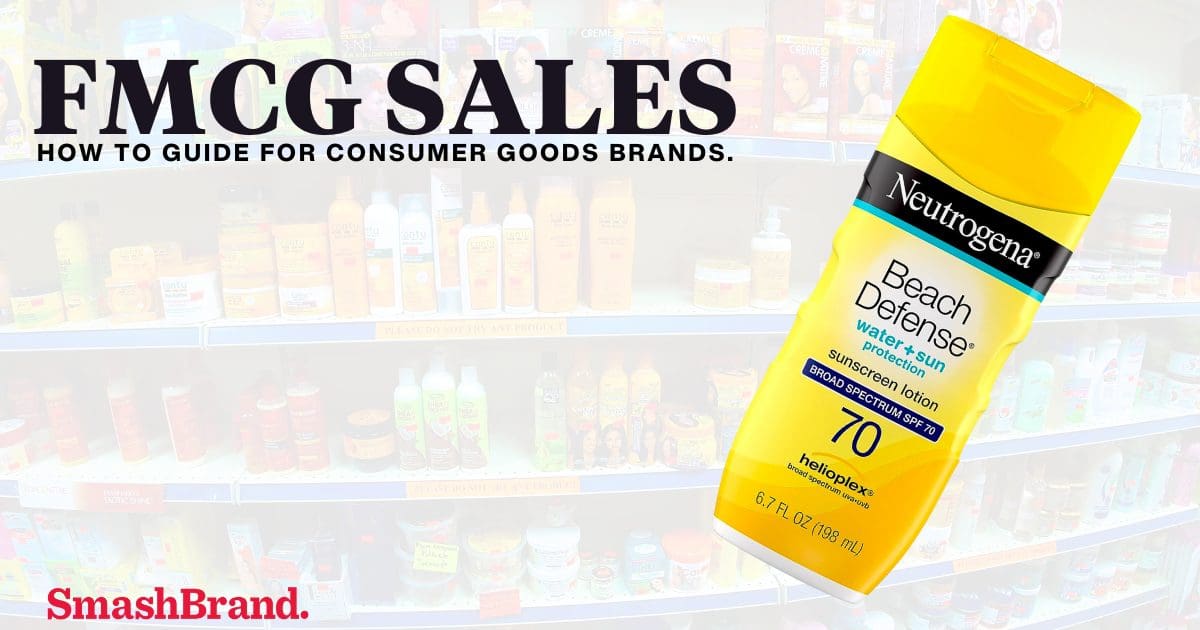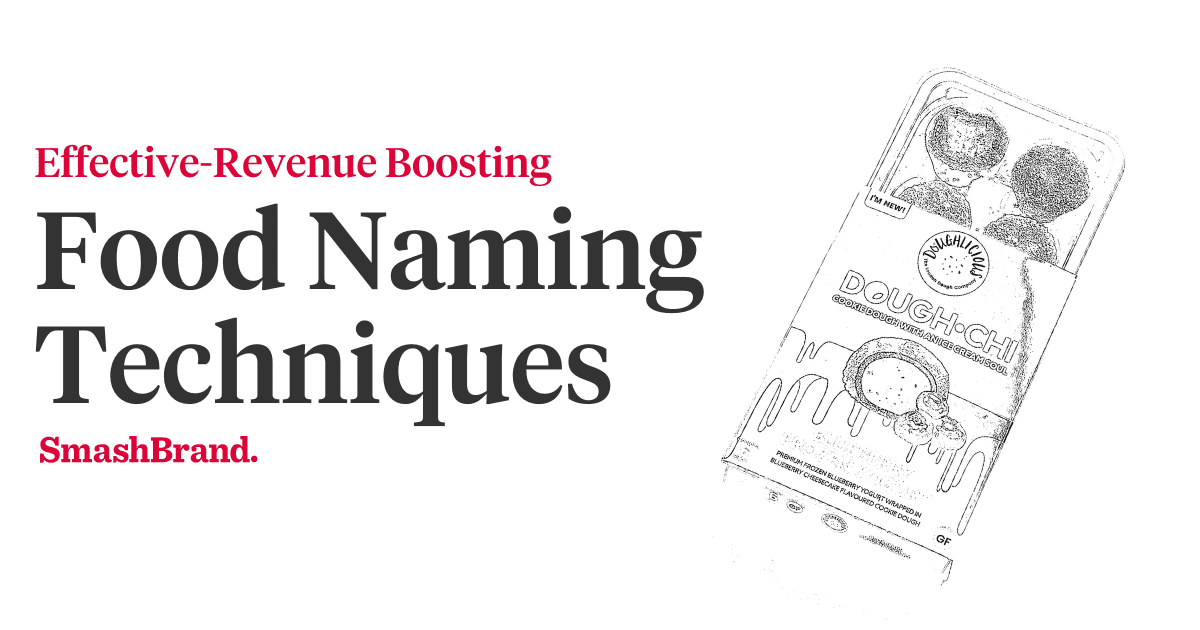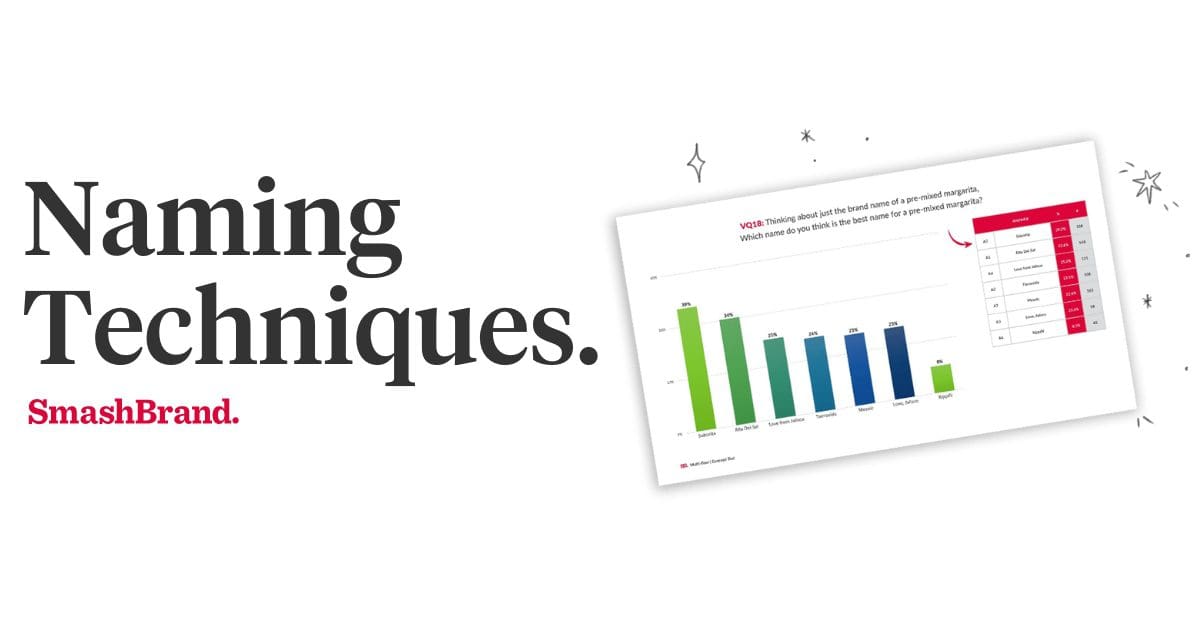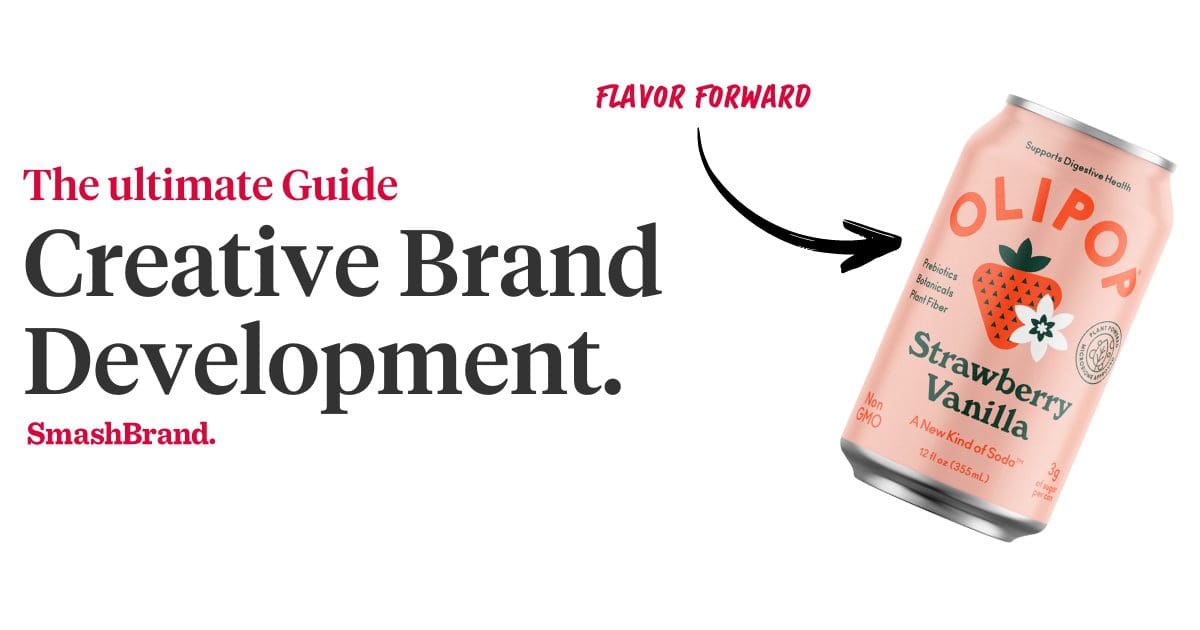Listen to This Article

Are you looking to boost your FMCG company’s performance? Do you want to generate more sales and revenue? If the answer to these questions is yes, you have come to the right place. Here, we will discuss the strategies for maximizing FMCG sales, growing your customer base, and capturing market share.
Whether you’re a new business just starting or an established brand looking to expand your reach, our guide will provide you with the tools and insights you need to succeed in FMCG.
Let’s dive and learn everything we need to know about FMCG sales.
Get your Hands on the SmashReport!
And enter to win a FREE brand diagnosis worth $20,000.
*The SmashReport is a monthly newsletter for FMCG and CPG brands, helping them stand out in the competitive retail marketplace.
What Is FMCG?
FMCG are products consumers often use and purchase repeatedly. These include personal care products, food and beverages, and household essentials.
The name “fast-moving” comes from the fact that these goods are quickly sold and replaced, as people frequently need (or desire) them.
As a result, FMCG sales are crucial for businesses because they generate a steady stream of revenue due to the frequent purchase patterns of consumers.
The importance of FMCG sales is evident in our everyday lives. Businesses in this industry focus on making products easily accessible, maintaining high quality, and ensuring they meet consumer preferences to keep up with the increased demand.
Key Players in FMCG Sales
In November 2022, Statista, a German online platform specializing in data gathering and visualization, shared its FMCG industry data.
It showed the top 50 key players in FMCG sales for the year 2021, which marked Nestlé AG as the MVP of the list. According to the data, the company has generated $97.5 billion.
The second-best company was PepsiCo, which made around $79.47 billion in the same year. At the same time, Procter and Gamble (P&G) are marked as the third FMCG company with the highest sales.
Achieving such kind of performance in post-pandemic time is a challenging job. It requires a well-planned marketing strategy and a brilliant sales team. Conduct your research and develop a sound company strategy; if you still want assistance, consider hiring a business guru who has the experience and understanding to advise you.
The following table provides a brief summary of the latest key players in FMCG sales:
| Company Name | Market Cap (as of Jan 20, 2023) | Products and Brands |
| The Kraft Heinz Company | $49.0 billion | Condiments, sauces, meals, meats, cheese, dairy products, beverages, coffee, grocery products, snacks, refreshments, dressings, etc. |
| Foshan Haitian Flavouring and Food Company Ltd. | $54.5 billion | Paste, oyster sauce, soy sauce, cooking wine, vinegar, granulated chicken bouillon, seasoning extract |
| Colgate-Palmolive Company | $62.8 billion | Dental care products, shower gels, shampoos, deodorants, home care products |
| Altria Group, Inc. | $79.8 billion | Tobacco and nicotine products |
| British American Tobacco p.l.c. | $86.2 billion | Tobacco and nicotine products |
| Mondelez International, Inc. | $87.1 billion | Snack products, including Oreo, Halls, Trident, Cadbury, Ritz, etc. |
| The Estée Lauder Companies Inc. | $92.5 billion | Cosmetic products, including skincare, fragrance, makeup, and hair care products. |
| Diageo plc | $104.8 billion | Alcoholic beverages, including whisky, beer, gin, rum, vodka, etc. |
| Anheuser-Busch InBev SA/NV | $121.3 billion | Alcoholic beverages, with almost 500 beer brands under its portfolio. |
| Unilever PLC | $128.6 billion | Beauty and personal care products, homecare products, and food & refreshment |
FMCG Sales Strategies
Establishing a successful FMCG brand demand the best strategies for product marketing, channel selection, and brand promotions. Here are some effective methods in fast-moving consumer goods business:
Outbound Selling
Outbound selling is a traditional sales strategy in which a company reaches its target customers directly using various channels.
The sales representative contacts the company’s leads directly instead of waiting for them to come. Some common examples of outbound sales include
- Cold calling,
- Cold emails,
- Door-to-door visits.
- Trade shows and industry events
Product Placement
Product placement, also known as FMCG merchandising, is another common strategy that helps to boost sales. It involves showcasing the correct consumer packaged goods to the right customer.
An FMCG branding agency may utilize TV shows, movies, music videos, or social media platforms to showcase its products to the target customers.
Pricing Strategies
Setting the right FMCG pricing strategy is crucial for sales growth and attracting new customers. However, it takes work due to changing consumer preferences, market trends, and competition.
An FMCG brand development agency must set pricing according to the latest FMCG trends and the current market. For that purpose, the FMCG market research becomes a critical part of the pricing strategies.
Promotional Activities
FMCG marketing is the heart of sales optimization. It helps to increase the reach of the company and attract new customers.
An FMCG packaging design agency leverages the power of graphics, fonts, and colors to convey the company’s message to its target customers.
Creating a solid brand presence is crucial in establishing a lasting impression. To attract potential clients, companies often utilize social media, television, and magazines to showcase desire-provoking advertisements.
Distribution Channels
To effectively reach the appropriate audience, it is necessary to experiment with different distribution channels. Certain FMCG products perform better when placed on physical shelves, while others are more successful through online sales.
Although sales may differ depending on the FMCG category, utilizing the right distribution channel can aid companies in increasing their revenue.
Challenges In FMCG Sales
There are various challenges when implementing strategies and growing company sales. Let’s discuss these challenges one by one to get a better understanding.
Intense Competition
One of the main challenges companies face is the intense competition within the FMCG industry. One aspect contributing to this fierce competition is the rise of private-label products.
These are often low-priced alternatives that can cause problems for well-established brands.
Moreover, the FMCG sector often faces low profit margins due to various factors, including high production costs, distribution expenses, and pricing pressures.
In such a scenario, companies must sell larger volumes to maintain profitability, further intensifying the competition.
Changing Consumer Preferences
Consumer behavior evolves, influenced by various factors such as technology, social trends, health concerns, and environmental consciousness.
The best way to anticipate this changing behavior is by conducting in-depth FMCG market research.
As consumer preferences change, customer loyalty becomes more fluid. FMCG companies must create compelling brand experiences and ensure product relevance to retain and attract customers in this dynamic environment.
Visual merchandising, for instance, is critical in capturing consumer attention at retail outlets and in the e-commerce space.
Supply Chain Management
As the FMCG industry operates on high volume and low-profit margins, efficient supply chain management is essential for optimizing sales activity and profitability.
One of the critical challenges in FMCG supply chain management is managing inventory effectively. Products often have a short shelf life, which makes inventory management essential.
Overstocking can lead to product spoilage and increased costs, while understocking can result in lost sales opportunities and dissatisfied customers.
Retailer Relationships
The sheer number of retail outlets, especially in the grocery sector, can make it challenging for a sales representative to reach every store regularly, impacting their ability to address retailers needs and concerns promptly.
Competition among FMCG brands also intensifies the challenge of retailer relationships. Multiple companies approach retailers and seek shelf space for their products. As a result, retailers must carefully pick products to stock.
An FMCG Agency must convince the retailer through its product quality and successful retailer relationship.
Technology And FMCG Sales
FMCG brands must leverage the power of the latest technologies to enhance their sales performance. The following technologies can help companies:
Ecommerce And Online Platforms
FMCG ecommerce allows brands to reach their potential customers globally, thus boosting the overall business performance.
Companies need to establish a robust online presence in today’s competitive market. Social media allows businesses to connect with consumers and address their product-related inquiries.
This approach can ultimately convert these consumers into potential buyers.
Data Analytics And Customer Insights
Several data analytics tools allow companies to understand the market behavior. For instance, an FMCG branding on social media can use analytics to measure consumer engagement.
Utilizing tools like Google Analytics can offer valuable insights into consumer behavior, demographics, and interests. It allows companies to develop products that accurately meet market demands. Additionally, exploring other powerful customer insights tools can further enhance your understanding of your target audience.
Supply Chain Optimization
The latest technologies, such as automation and IoT devices, can help companies track their real-time performance. These devices can generate valuable data that brands can use to observe the market trends.
Apart from that, companies can also leverage the power of machine learning and AI to observe patterns in the sales. It opens up a new opportunity for optimizing the supply chain.
Trending technologies also help companies to maximize their cost-effectiveness. It allows for streamlining logistics and minimizing waste.
Future Trends in FMCG Sales
The FMCG industry continuously evolves with the ever-changing consumer preferences and behaviors. Here are some of the top FMCG trends to look out for in 2023.
Consumers are becoming environmentally conscious. Therefore, sustainability has become a key driver of FMCG innovations. Companies are focusing on reducing their carbon footprints.
They are switching to eco-friendly packaging and materials for product manufacturing. Moreover, there is a trend in utilizing green energy and circular economy initiatives.
After the global pandemic of Covid-19, health and wellness have become a new trend for consumers in 2023. Therefore, companies respond to this new trend by offering more functional and healthy products.
Data-Driven Brand Development For FMCG brands
SmashBrand is a brand development agency for FMCG and CPG companies. From brand strategy to packaging design testing, our Path To Performance™ process guarantees a retail performance lift. Book a time to discuss your project with our team.






